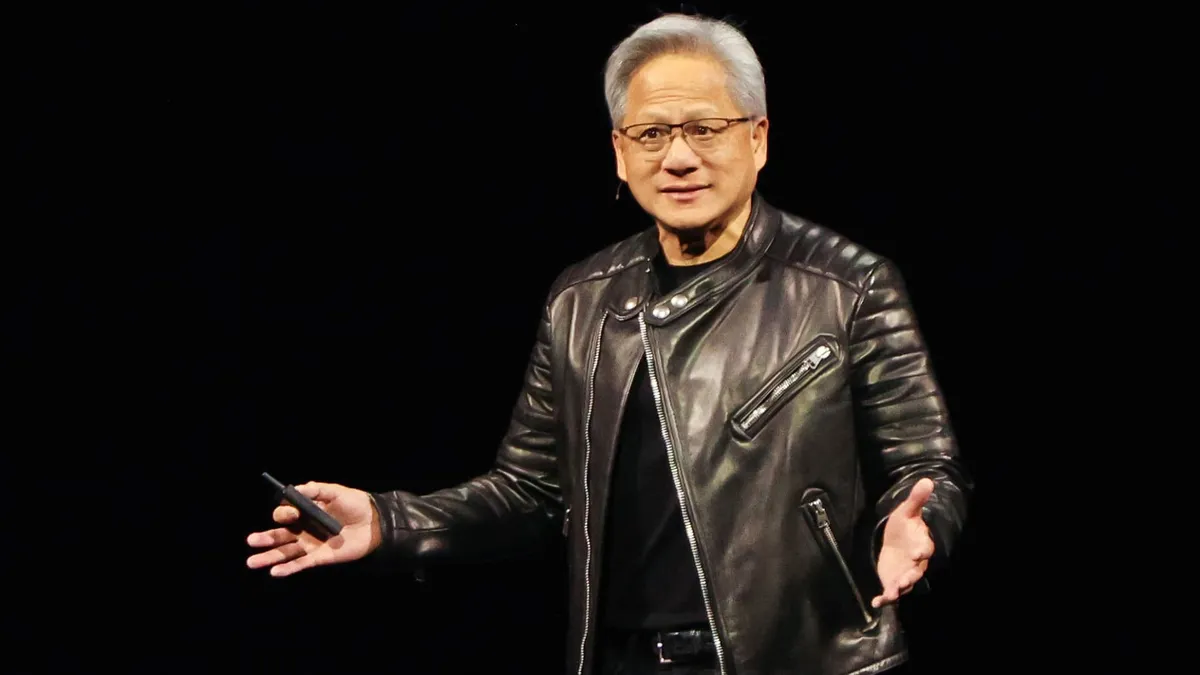
Analysts on Wall Street emerged from Nvidia's flagship GPU Technology Conference on Tuesday with a mix of optimism and caution regarding the company's future in the rapidly evolving field of artificial intelligence. During the keynote address, CEO Jensen Huang unveiled new chips designed for deploying AI models, with plans for these innovations to ship by 2026. Despite the excitement surrounding the announcements, Nvidia's stock experienced a decline of over 3% on the same day, contributing to a year-to-date loss exceeding 14%. This downturn marks a notable shift from previous years, where the GTC conference typically served as a positive catalyst for Nvidia's stock performance.
Jefferies analyst Blayne Curtis highlighted that while the pace of innovation from Nvidia remains impressive, there were expectations for more concrete evidence regarding TAM expansion (Total Addressable Market) and TCO advantages (Total Cost of Ownership). Despite this, Curtis maintained a buy rating on Nvidia's stock with a price target of $160, indicating a potential upside of 60% from the current levels.
Bank of America also expressed confidence in Nvidia, maintaining a buy rating with a price target of $200, which implies a significant upside of 73%. Analyst Vivek Arya noted that the recent product and partnership announcements at the GTC conference, combined with insights from a post-keynote meeting with the CFO, demonstrate Nvidia's ability to deepen its competitive moat in a $1 trillion infrastructure and services market.
Citi echoed a similar sentiment, upholding its buy rating and setting a price target of $163, which suggests a 41.2% potential gain. Analyst Atif Malik commented that the keynote reassured them of Nvidia's leadership, particularly in the area of inference, which now demands significantly more computational resources.
Evercore ISI reiterated its outperform rating with a price target of $190, indicating a potential gain of 64.6%. Analyst Mark Lipacis emphasized that Nvidia’s commitment to building a comprehensive ecosystem encompassing chips, hardware, networking, and software positions the company at the forefront of the AI computing era. He views the recent stock weakness as a prime buying opportunity.
Deutsche Bank, however, maintained a more cautious approach, keeping a hold rating with a price target of $145, which reflects a 25.6% upside. Analyst Ross Seymore acknowledged Nvidia's strong product roadmap and its dominant position in serving AI computing needs but noted the lack of significant surprises in the keynote presentation.
In contrast, JPMorgan reiterated its outperform rating with a price target of $170, suggesting a 47% upside. Analyst Harlan Sur underscored Nvidia’s leadership in silicon technologies—spanning GPU, DPU, and CPU—as well as its robust hardware and software platforms, positioning the company to capitalize on major trends in AI, high-performance computing, gaming, and autonomous vehicles.
Meanwhile, Morgan Stanley maintained an overweight rating with a price target of $162, indicating a potential 40% upside. Analyst Joseph Moore noted that even without significant surprises during the keynote, Nvidia effectively demonstrated its capacity to address multiple waves of AI scaling requirements and affirmed strong near-term cloud demand.
Lastly, UBS held a buy rating with a price target of $185, signaling a 60% gain. Analyst Timothy Arcuri remarked that Nvidia successfully outlined its roadmap and dispelled concerns regarding a slowdown in compute demand and scaling.
As Nvidia navigates its path forward in the competitive landscape of artificial intelligence, the mixed reactions from analysts highlight both the potential and challenges that lie ahead. While some analysts remain bullish, emphasizing the company's innovative capabilities and market leadership, others adopt a more cautious stance, reflecting the need for further proof of growth and expansion. Investors will be keenly watching how Nvidia capitalizes on its recent announcements and maneuvers through the evolving tech ecosystem.